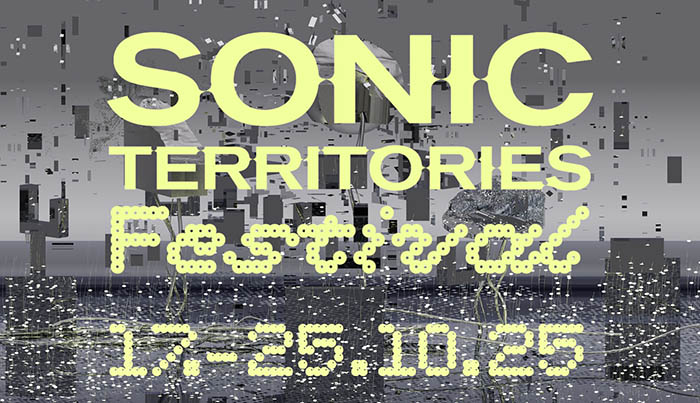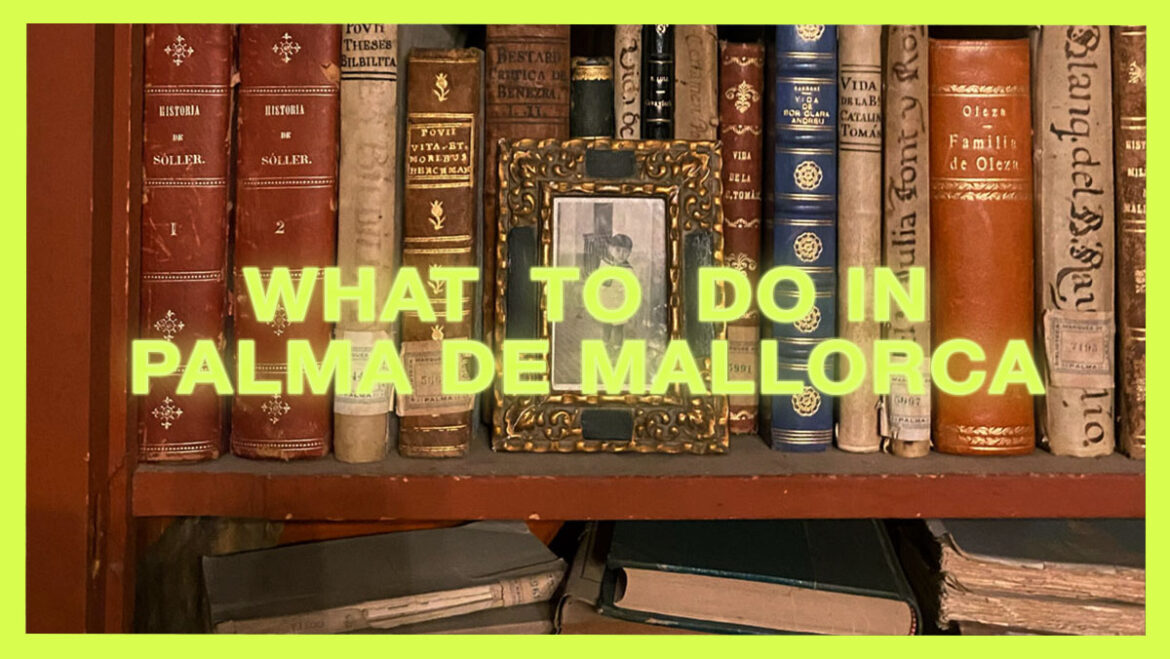An artist friend of mine described Palma as being a smaller but more quaint version of Barcelona, and I must agree with him. Most people visit Mallorca for its picturesque towns and beaches, not daring to spend a few hours in the capital, but investing a day or two in the city is a wonderful idea, especially for those interested in great food and art. My favorite thing was wandering through the cobbled streets, following the faint scent of the sea, until I reached the towering cathedral perched meters away from the coastline, its carved peaks imposing against the skyline at any hour of the day.
The Majorcan countryside is not at all a place to go in search of inspiration; but admirable for people whose minds already teem with ideas that need recording in absolute quiet…” — Robert Graves, author of I, Claudius.

A great place to start your morning is the Miró Foundation, further away from the major attractions but still close enough to do in a few hours. It is one of the most popular spots for a reason. However, the jewel in the crown was the last standing and privately owned palace in Palma, named Can Vivot. A discerning construction safeguarded in the city’s heart, dating back to the Middle Ages. The library was one of the most impressive I have ever seen, nestling first editions of Dante’s Inferno and several occult books banned by the Spanish Inquisition. If there is one thing you must do in Palma, it is book a tour of this house.
Can Vivot
Carrer de Can Savellà, nº 4
07001 Palma
www.visitpalma.com
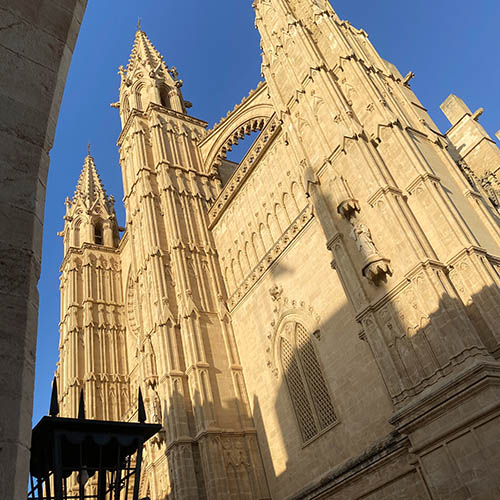
The Banys Àrabs is another brilliant spot to visit if you are downtown and want a quick escape from the crowds. The architecture and feel of the gardens is a romantic experience on its own. Regarding food, Fornet de la Soca was the winner, a quaint bakery with immaculate decoration and mouth-watering pastries and empanadas. I tried half a dozen of them — no joke — my favorite was the lamb with peas, nothing as rewarding after a long walk in the Spanish sun. For drinks, Bar Ábaco feels like stepping back in time. Although the service can be a little rough, the ambiance makes up for it. I especially loved the excess of fruit on the ground to convey a sense of opulence.
Banys Àrabs
Carrer de Can Serra, 7, Centre, 07001 Palma
www.mallorcainformationen.de
Fornet de la Soca
Costa de Can Berga, 2-11, Distrito Centro, 07001 Palma
www.instagram.com/fornetdelasoca
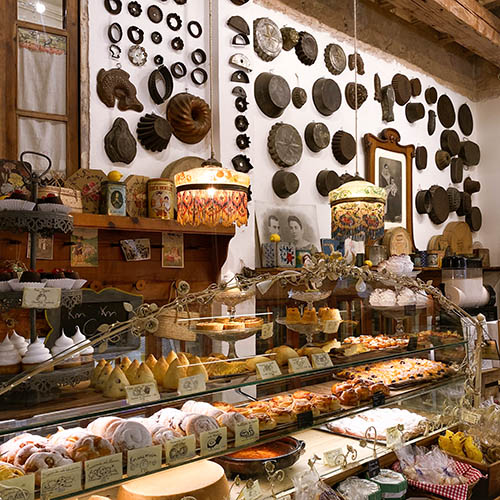
After exploring Palma, next on your list should be one of the most paradisiac spots, the Alfabia Gardens. A fever dream conjured ages ago and enclosed between evergreen mountains. The gardens were fresh and luminous and their interiors exquisite. You could even get a Spanish tortilla and a freshly squeezed orange juice to replenish your forces. This is the best stop on your journey before heading to Soller and its port. The village of Soller, although small, was chock-full of life. I would recommend getting an almond granita at Ca’n Pau Gelats and do a bit of shopping on the main streets. There is even a tram that takes you to the port if you do not have transportation. Once at the port, there is a large beach and several restaurants to help you unplug. Though crowded in summer, the beach retains its charm. A sunset walk along the promenade can be quite magical.
Alfabia Garden
Carretera Palma-Sóller, km 17, 07110, Illes Balears, Spain
www.jardinesdealfabia.com
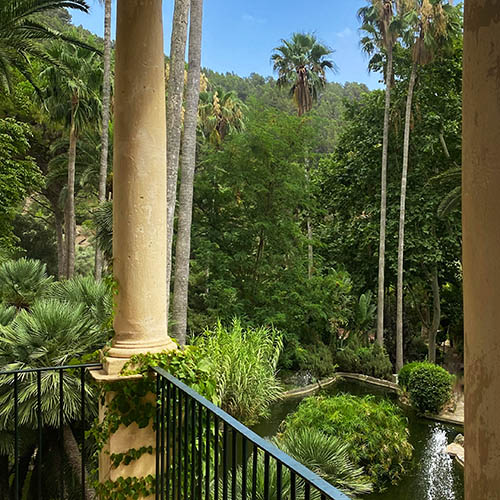
The best area of this region, however, is the Valldemossa-Deià section. The imposing mountains outlined by small villages and cerulean seas looked too good to be true, and yet, they were. Even for the famous composer Chopin, who spent the winter of 1838 and 1839 in the Carthusian monastery at Valldemossa writing some of his masterpieces, he thought of the place as the most idyllic land for creation. The entire area offers something magnetic for everyone. It is not in the abundance of stimuli, but in the lack of it. The views from Valldemossa are some of the most beautiful I have ever seen. With the custard-colored cottages and green window shutters, it is a photographer’s dream. Deià is a more rustic version of Valldemossa and slightly smaller, but still no less impressive. The best food I had on the entire trip was at Cala Deià in the restaurant Ca’s Patro March, a little wooden hut nestled on the side of a cliff overlooking luminous warm waters. It is perhaps one of the most magical restaurants in the world. The downside is that the Cala takes a bit of trouble to get to — around a thirty-minute walk from the center of town — but the food and the views are worth it, and its seclusion adds to the enigma. My favorite dishes were the boquerones drenched in vinegar and the sizzling shrimp. You could even hike after taking a dip in the Balearic Sea and bask in the magnificent views of the Tramontana Mountains, but beware of the heat and bring lots of water and sunscreen.
Ca’s Patro March
www.caspatromarch.myrestoo.net
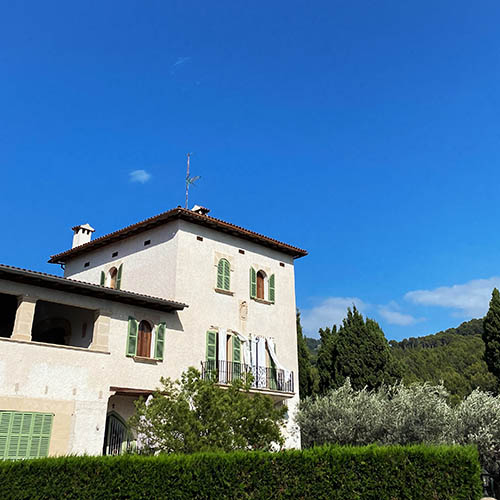
Robert Graves‘ house is also right on the path to Cala Deià, just on the outskirts of town, and was a fantastic place to visit starting the day. Continuing with the theme of grand houses, another one that is often overlooked, is the queer archduke Luis Salvador’s Villa, Son Marroig. A wonderful building on top of a cliff with one of the most impressive sunset viewpoints.
Robert Graves’s House
Carretera Deià a Sóller s/n.
07079 Deià – Illes Balears
www.lacasaderobertgraves.org
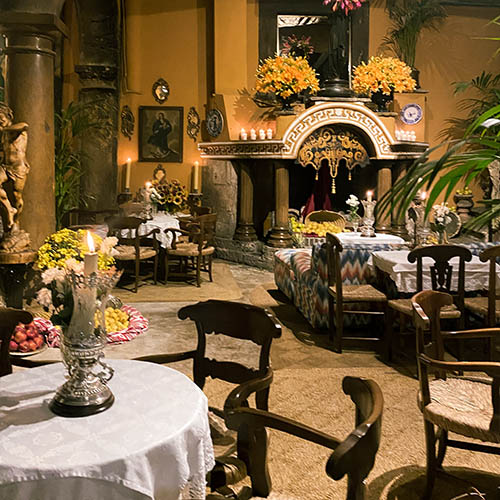
And lastly, if you are looking for a place to stay, and you are willing to splurge, La Residencia is your best option. The views from the restaurant are exceptional, and you will not find a more picturesque bedroom to spend the night. There are a plethora of things to see in Mallorca, but these are the attractions worth adding to any itinerary. I can not wait for the sky to clear and new summer winds to arrive. Perhaps next time they will take me back to the places I most adored.
Belmond La Residencia
Son Canals s/n, 07179 Deià, Mallorca
www.belmond.com
Aaron Artem is a writer, designer and artist from Mexico. With a background steeped in Mayan ruins, crumbling mansions and overgrown jungles, during the pandemic, he shifted from a business background to focus on his artistic expression. His furniture designs received publication in The World of Interiors and his writing has appeared both on online platforms and art galleries. Currently working on his debut novel and his first interior design projects, Aaron spends his time in the Yucatán peninsula, where he lives with his cat Tafi and a growing collection of unread books.



